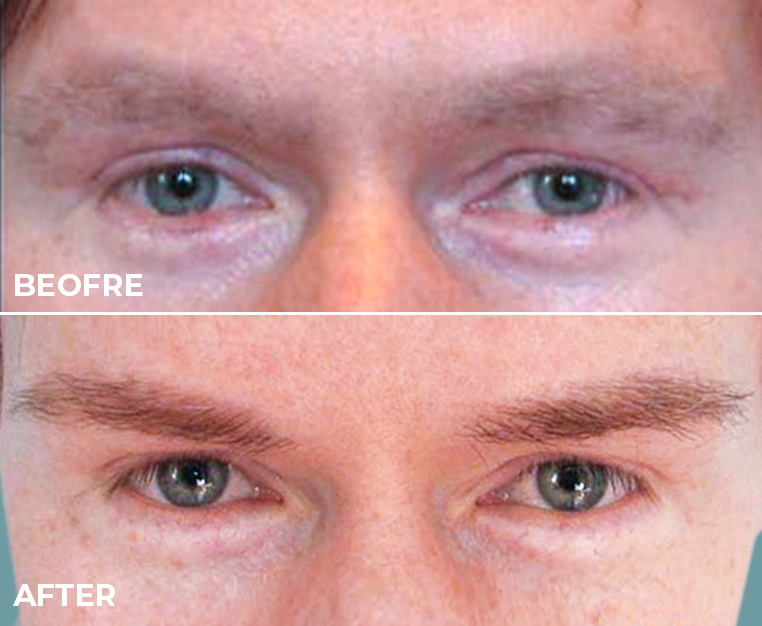Hair transplants have become a popular solution for addressing hair loss and thinning. For many, this provides an ideal chance to restore hair and confidence. While the procedure marks a significant step towards revitalizing your appearance, the journey doesn’t end there.
The days, weeks, and even months following your hair transplant are crucial for ensuring your newly transplanted hair follicles take root and flourish. And regardless of the procedure you choose, you risk having an unsuccessful transplant if you fail to take good care of your new grafts.
In this guide, we’ll walk you through essential tips and practices contributing to optimal healing and growth after your hair transplant.
Preparing for a Successful Recovery After a Hair Transplant
Talk To Your Doctor/ Surgeon
Establishing a clear communication line ensures that you and your surgeon are on the same page regarding your expectations, concerns, and post-operative care plan.
This crucial step sets the foundation for a smooth healing journey. During your consultation, openly discuss your expectations, medical history, and any concerns you might have
Lifestyle Adjustments To Make Before the Procedure
Making lifestyle changes before a hair transplant ensures the best possible outcome. Adjusting your habits creates an environment where your body can focus on healing and promoting healthy hair growth.
- Nutrition: A well-rounded diet plays a pivotal role in the success of your hair transplant. Opt for foods rich in vitamins A, C, D, and E and minerals like zinc and iron. Incorporating lean proteins such as fish, poultry, and beans supports hair follicle strength. Nutrients like biotin and omega-3 fatty acids aid in hair growth and overall scalp health.
- Hydration: Staying adequately hydrated is crucial for wound healing and cellular repair. Water nourishes your body’s cells, including those involved in hair follicle regeneration. Aim for at least eight glasses of water a day to maintain optimal hydration levels.
- Alcohol and Tobacco: Both alcohol and tobacco affect healing and overall hair growth. It would be best to avoid smoking and alcohol before and after your hair transplant. This enhances oxygen and nutrient delivery to the scalp, promoting quicker recovery and robust hair growth.
- Stress Management: Chronic stress elevates cortisol levels, which can negatively impact hair health and hinder recovery. Engaging in relaxation techniques, such as meditation, deep breathing, or even light exercises like walking, helps lower stress hormones and creates an environment conducive to healing.
- Sleep: Adequate sleep is the body’s natural repair mechanism. During deep sleep, cell division and tissue repair occur, which are essential for healing after surgery. Strive for 7-9 hours of quality sleep each night to support the regeneration of hair follicles and tissue.
- Physical Activity: While light activities like short walks are beneficial for circulation, strenuous exercises can strain the healing scalp. Postpone vigorous workouts until your surgeon advises it’s safe, preventing any undue stress on the transplant area.
- Medication: Follow your surgeon’s medication instructions meticulously. Certain medications, like blood thinners and non-prescribed supplements, can affect the healing process or cause complications during the procedure.
- Scalp Care: Gentle care of your scalp post-op is vital. Follow your surgeon’s recommendations for cleaning and moisturizing to prevent infection and maintain an optimal healing environment.
- Hair Care Products: Using harsh hair care products or exposing your scalp to excessive heat can hinder healing and potentially damage new hair follicles. Stick to products your surgeon recommends and handle your hair with care to encourage healthy growth.
Post-Transplant Care
After the hair transplant, it’s essential to prioritize rest. You’re allowing your body to direct its energy towards healing, which is critical for successful recovery and new hair growth.
It also means that you should avoid intense physical activities during the first days after the procedure. This prevents unnecessary strain on the scalp, reducing the risk of graft displacement and promoting proper healing.
Here are other ways of taking care of your hair and scalp after a hair transplant:
- Gently Cleaning the Scalp: Cleaning your scalp is important, but do it gently. Follow your surgeon’s guidelines for cleansing to remove debris without disturbing the newly transplanted grafts. This prevents infection and encourages graft survival.
- Avoiding Direct Sunlight and Protecting the Scalp: Shield your scalp from the sun’s harmful rays. Wear a hat or an umbrella outdoors to prevent sunburn, which can damage the grafts and hinder healing.
- Over-the-Counter Pain Relief Options: If you experience mild discomfort, over-the-counter pain relievers like acetaminophen can help. Consult your surgeon before taking any medications.
- Following Prescribed Medications: Your surgeon may prescribe specific medications to manage pain and reduce the risk of infection. Adhere to the prescribed regimen to ensure a comfortable recovery.
Nutrition and Hydration For Optimal Healing
A well-balanced diet is your body’s ally in post-transplant healing. Essential nutrients like protein, found in lean meats, eggs, and legumes, aid in tissue repair and promote strong, healthy hair follicles. Vitamins such as A, C, and E contribute to collagen production, crucial for wound healing and graft integration.
Hydration also plays a critical role in graft survival. Water facilitates nutrient delivery to cells, including those responsible for hair growth. It’s the key to maintaining an environment conducive to successful graft integration and overall healing.
Long-Term Care and Maintenance
Say no to harsh chemicals and aggressive hair treatments. Dyes, perms, and excessive heat can harm both your new hair and scalp. Prioritize the health of your transplanted hair by avoiding such.
Instead, opt for mild, sulfate-free shampoos and hair care products. These gentle formulations maintain the scalp’s pH balance, prevent irritation, and promote a healthy environment for your new hair to grow.
Speaking of shampooing, you should consider shampooing every day to remove the scabs. However, after a couple of days or weeks usually (7 to 10 days), scabs and traces of blood should have cleared up.
But as you wash your hair, be gentle. Use a soft touch to cleanse your scalp without disrupting grafts. Avoid vigorous rubbing or excessive pulling during styling to safeguard delicate follicles.
Common Issues During the Healing Process
Swelling and Itching
Swelling around the forehead and eyes is a typical reaction after a hair transplant, usually peaking around the second or third day. This is due to the body’s natural response to the trauma of the procedure. To minimize swelling, apply cold compresses intermittently for the first 48 hours. Additionally, sleeping with your head slightly elevated can help reduce fluid accumulation.
As for itching, it’s a sign that healing is taking place. However, scratching can dislodge grafts and slow down the recovery process. To alleviate itching, you can gently pat or tap the itchy area with clean fingers. If it persists, your surgeon might recommend a mild, non-alcoholic topical solution to ease the discomfort.
Sleeping
Proper sleeping positions can aid in a smoother healing process. Elevating your head while sleeping for the first few nights can assist in reducing swelling. Using an extra pillow or reclining at a comfortable angle can make a significant difference.
Sleeping on your back helps prevent direct pressure on the grafts, which can benefit their survival.
Shaving
Refrain from shaving the transplanted area until your surgeon gives the green light, usually after a couple of weeks. When you’re ready to shave, use a gentle touch and a soft, clean razor.
Shave in the direction of hair growth to avoid damaging the newly transplanted grafts. Taking your time and being cautious during this process will protect both the grafts and your healing scalp.
In Conclusion
The recovery timeline after a hair transplant can vary from person to person. Generally, the initial healing phase takes about 7 to 10 days, during which the scabs and crusts on the scalp from the procedure usually fall off. Most people can resume their normal daily activities within this timeframe.
As you’ve seen, frequently consulting with your doctor is vitally essential for a smooth process. That’s why having doctors who genuinely care about your health is a game-changer.
At Vinci Hair Clinic, we’re all about putting your well-being first. With over a decade of experience and cutting-edge methods, we’re your go-to for amazing hair restoration. It’s not just about hair – it’s about feeling confident and alive.
Contact us now for a free consultation and take the first step towards a new you!


